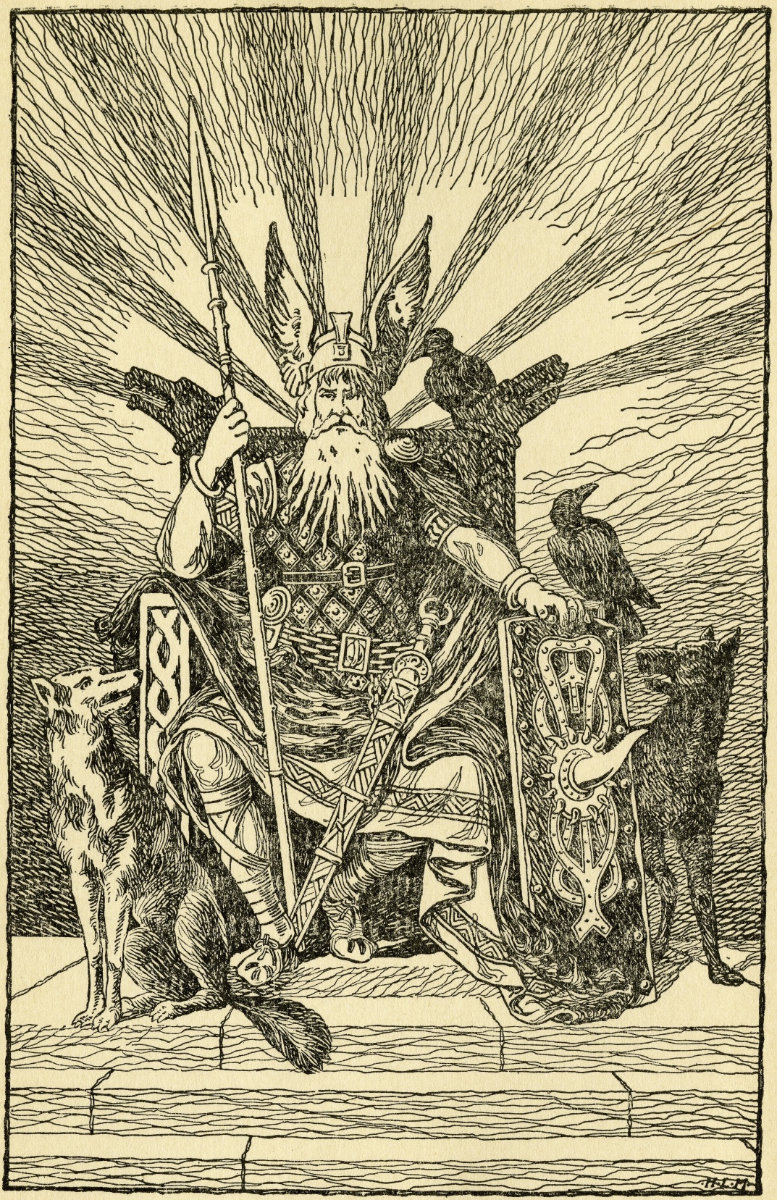In Norse mythology, Huginn and Muninn (roughly “mind and will”) are a pair of ravens that serve under the god Odin and fly all over the world, Midgard, and bring information to the god Odin. Huginn and Muninn are attested in the Poetic Edda, compiled in the 13th century from earlier traditional sources: the Prose Edda and Heimskringla; in the Third Grammatical Treatise, compiled in the 13th century by Óláfr Þórðarson; and in the poetry of skalds. In the Poetic Edda, a disguised Odin expresses that he fears the ravens may not return from their daily flights. The Prose Edda explains that Odin is referred to as Hrafnaguð (“raven-god”) due to his association with Huginn and Muninn. In the Prose Edda and the Third Grammatical Treatise, the two ravens are described as perching on Odin’s shoulders. Heimskringla details that Odin gave Huginn and Muninn the ability to speak.
| Alias Huginn and Muninn |
| Real Names/Alt Names Huginn, Muninn |
| Characteristics Sidekick, Literary Characters, Bird-themed, Prehuman Epoch, Scandinavian |
| Creators/Key Contributors Unknown |
| First Appearance Norse mythology |
| First Publisher ○ |
| Appearance List Poetic Edda: Grímnismál (c. 13th century, based on older oral poetry) – Odin describes sending Huginn (“Thought”) and Muninn (“Memory”) out into the world each day, Prose Edda: Gylfaginning (c. 1220) by Snorri Sturluson – Retells the myth of Odin’s ravens, explaining their names and function, Prose Edda: Skáldskaparmál (c. 1220) by Snorri Sturluson – Lists Huginn and Muninn among kennings for ravens, Heimskringla: Ynglinga saga (c. 1230) by Snorri Sturluson – Alludes to Odin’s birds as part of his shamanic and magical power. Collections: Tales of Mystery and Imagination (1923). |
| Sample Read Tales of Mystery and Imagination [Internet Archive] |
| Description In Norse mythology, Huginn and Muninn (roughly “mind and will”) are a pair of ravens that serve under the god Odin and fly all over the world, Midgard, and bring information to the god Odin. Huginn and Muninn are attested in the Poetic Edda, compiled in the 13th century from earlier traditional sources: the Prose Edda and Heimskringla; in the Third Grammatical Treatise, compiled in the 13th century by Óláfr Þórðarson; and in the poetry of skalds. In the Poetic Edda, a disguised Odin expresses that he fears the ravens may not return from their daily flights. The Prose Edda explains that Odin is referred to as Hrafnaguð (“raven-god”) due to his association with Huginn and Muninn. In the Prose Edda and the Third Grammatical Treatise, the two ravens are described as perching on Odin’s shoulders. Heimskringla details that Odin gave Huginn and Muninn the ability to speak. |
| Source Huginn and Muninn – Wikipedia |


